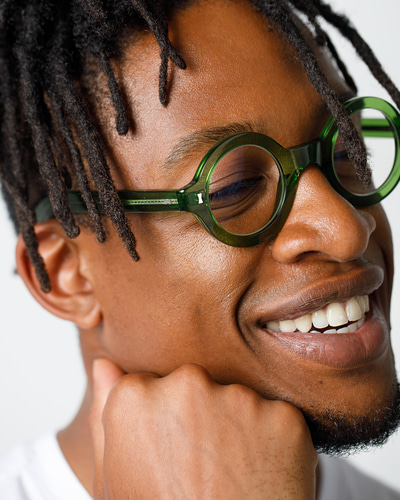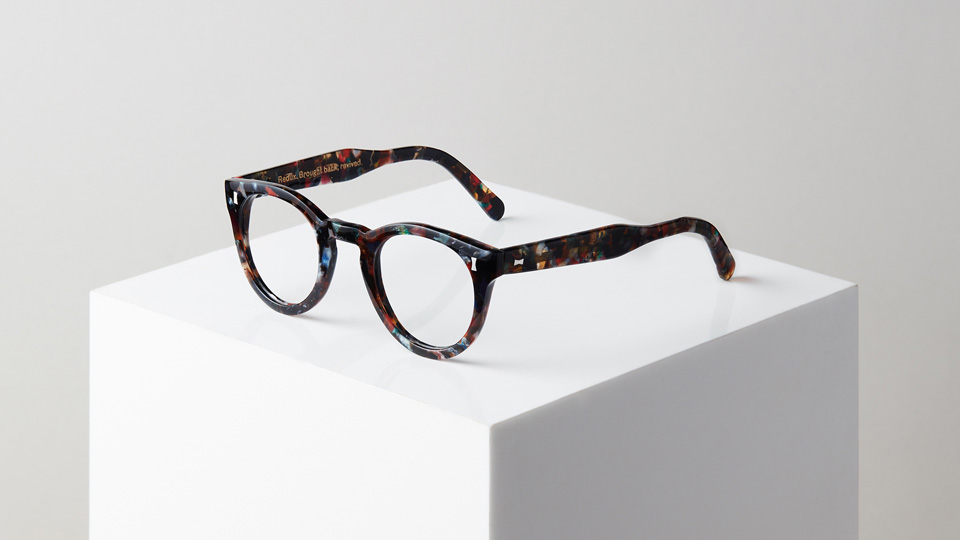- OT
- Industry
- Eyewear and lenses
- Spectacles as an extension of the wearer
Behind the brand
Spectacles as an extension of the wearer
Cubitts founder, Tom Broughton, discusses celebrating individuality, inclusive frame sizing, and what the cost of living might mean for repairs and services

04 April 2023
What is the latest campaign that Cubitts has released and why does it stand out from the crowd?
At the start of this year, we released a new campaign that is all around individuality, personality and identity. A pair of spectacles is an extension of the wearer. The reason I got into the industry in the first place was that, to me, a pair of spectacles was a physical manifestation of the people who wore it. I was inspired by people like Morrissey from The Smiths and Jarvis Cocker from Pulp and other iconic spectacle wearers. That’s why we wanted to do a campaign celebrating the individual.
In autumn, Cubitts launched its Gloriously Awkward collection, with an associated campaign. Could you tell us what went into this collection?

We’ve been working on this for a while. One of the first steps was trying to find a proper database of facial measurements, which is really hard to do. I remember going through all the old dispensing optometry textbooks and trying to piece together bits of information. But the sample sizes were tiny, data was mostly out of date, and it often only covered a relatively small number of different facial measurements.
We realised that if the database didn’t exist, we needed to make our own. We built a facial-scanning technology to build a true cephalometric database. We scanned around 3300 faces and then tried to find patterns in those people and plot, not just the averages, but the distribution of those people. Everything from crest height to frontal angle, bridge width, temporal width, length to bend, pupillary distance, face width and nose length.
We matched that data to our existing frame collection to identify gaps. That allowed us to identify a whole bunch of different people that were unserved. People with extra narrow or extra wide heads, to people with a low crest or narrow bridge. We spent six to nine months developing collections specifically for those people.
The reason I got into the industry in the first place was that, to me, a pair of spectacles was a physical manifestation of the people who wore it
Will Cubitts look to build on technology and its applications to eyewear design?
I think technology, and what we have developed, can play a huge role in improving the experience for the customer, and ultimately end with a better product and better dispense.Where we want to go, though it is many years away, is a place where scanning your face becomes an integral part of the spectacle design process, and as routine as having your refraction. I think there can be a future where every frame is made bespoke for the individual and fits perfectly. The really exciting part is when you can combine facial scanning with dispensing and the gold standards of optics. The relationship between the dispense and the frame is important, but in most cases the frame is already made and you’re having to make adjustments. The beauty of making a frame to order is that you can do all of that at the point of dispense. I think we’ve got a long way to go, but it is exciting.

What approach does Cubitts take to sustainability in eyewear? How did this inform the Redux collection?
One of the issues of frame and lens production is that there is a lot of wastage. Most frames made from acetate will be milled or cut from a block of acetate, with often 70–75% of that material ending up in the waste bin. The exciting thing is to think about how we can reduce wastage or make better use of it, and that is why Redux came about.We produced a run of frames where we took the off-cuts from spectacle making, cut them into small pellets, and then used a combination of acetone, pressure and heat to repurpose it into new material, which was then used to make the frame. It has turned out much better than we anticipated, the material is beautiful and gives a new vibrancy to something that would previously end in a landfill.
B Corp certified
There is also a lot of wastage from lenses. There are dummy lenses, which don’t have a secondary purpose so end up in practices’ bins up and down the country, and glazed lenses where the blanks have to be cut to shape. We’re trialling different experiments there. We’ve previously worked with the designer, Yair Neuman, to turn dummy lenses into new materials, and we’ve been working with Zeiss to find new ways that we can upcycle and downcycle the waste lens material to go into other purposes – insulation or building materials. I don’t think we’re that far away from having a closed-loop production process where there is a use and purpose for every bit of waste material.
What was a key achievement for Cubitts in 2022?
Recovering from COVID-19. For us, and most other practices, the last two years have been really difficult. We’ve been forced to close, and had really strict guidelines that limited some of the things that we wanted to do. To come bouncing out of that is amazing. It means that we can get back on track after a couple of tricky years, and start to do the stuff we want to do around technology, bespoke eyewear, and elevating standards across the optical industry in the UK.What did it mean for Cubitts to expand into Edinburgh?
Edinburgh is amazing because Scotland is a new country for us. The site that we took in the Old Town used to be an optician in the 1970s, but was most recently a kilt shop. I tried to get the site six years ago but was outbid, so there is something nice about returning to it six years later. We now have two sites, one in the New Town, one in the Old Town. There is a design aesthetic that unites them, but each has been designed to reflect the building in its individual area.The cost of living has been a significant concern for many in the past year. Has Cubitts seen this reflected in patient behaviour?
It’s been really tough and I don’t think we’ve seen the worst of it. The cost of everything has gone up: because of the raw materials and supply chain, but also the pound being a lot weaker against the dollar and the euro. At the other end, with rising energy bills and mortgage rates, people have less money to spend. It’s going to be a tricky three to six months. I think we will need to be sensitive to that.
I think people still want value, and a high-quality pair of spectacles will last you many years, especially if you look after them. We’re already seeing this, but my expectation is we will see continued growth in a lot of our services: repairs, adjustments, re-glazing. We offer a rehab service so customers can drop in their frames, and we’ll take it apart, polish it, and replaces hinges if required. I think we’ll see continued interest in that because it means that people won’t necessarily need to buy a new product and they can still have access to a high-quality product without having to spend as much money. I think that will be a trend for next year: renew over replace.
What trends are you seeing in frame design, or demand from consumers?
We’re 10 years old and over that time, but especially in the last six to nine months, we’ve seen that people continue to get more adventurous in their frame choices. There is almost a bifurcation between those who want thick, heavy frames, and those who want big, thin frames.People are also more experimental with colours. Five years ago, the most popular colours would be black, tortoiseshell and Havana. Now there will regularly be a muted green, burgundy or vermillion. People believe more and more that a pair of spectacles can become a part of their identity rather than a generic object that sits on their face that they don’t really think about.
What is Cubitt’s short-term and long-term goals?
Keep surviving. We’ll probably grow a little more, maybe open another couple of practices. We want to keep getting better – continue to improve the product, our lenses and service, and keep investing in the company as we go through what will be a difficult 12 months with the cost of living and recession, things that are out of our control.
I feel really passionate that there is a role for both practices and technology to improve standards across optics. We want to continue chasing that. Our motivation is to be the best.
Three facts about Cubitts
- Cubitts’ first customer was called Iris
- In the early days of Cubitts, Tom hand delivered every pair of spectacles on his bicycle
- Celebrity wearers include Steve Coogan, Helena Bonham Carter, and Alan Carr.
Advertisement


Comments (0)
You must be logged in to join the discussion. Log in